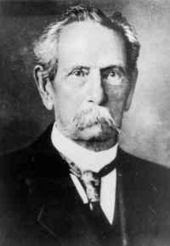Once you have made up your mind about purchasing a luxury car, you need to look for dealers that are in your area. If you live in or near a big city, you will find that you have plenty of options as far as dealerships are concerned. If you live in a rural area, you need to plan on driving a little further to find one. Either way, keep in mind that you will have to return to any dealership you choose intermittently for scheduled maintenance, upkeep and of course if anything unexpected should occur.
After checking your local area, go ahead and get online to do some research on the Internet, both about the luxury cars available to you in your price range, any special deals either by dealerships or through the manufacturers that are being offered, and whatever other information you need to help in your decision. Look at models that are available at those dealerships that are near you. Consider what statement you want to make with your luxury car, whether it be powerful engines under the hood or an aura of quiet class and financial success.
Narrow down your choices and take a look in a consumer reports magazine too to get a feel for what current and past owners think about their purchases. Many companies do a very thorough job researching all there is to know about all kinds of luxury vehicles, and this is true whether you are looking for a Porsche, Mercedes Benz, Aston Martin, BMW, Lamborghini or any other high end vehicle you are considering.
mercedes benz
Seven Things You Should Know About Hybrid Cars.
If you are thinking about a hybrid vehicle, you may be hearing quite a bit of talk. A number of people think the hybrid car is the best thing on the market. Some say it is just a passing thing. Other people say they think they can save a lot of cash, but you are maybe not sure it is actually worth it. What is the truth, and how do you separate myth from fact with all of the stuff that is being thrown at you? Here are 7 of those common hybrid car myths, you may or may not have heard about.1. Hybrid cars are the same as electric cars
This is not true because hybrid vehicles are fuel-powered for the most part. They have what are called battery assists. The assist is powered by a nickel-metal hydride battery pack that is rechargeable.
2. You are guaranteed to save money with a hybrid.
For anyone who is doing city driving, you might save gas and you may not. The same goes for highway driving. There are just too many variables. It has been said that if everybody bought hybrid vehicle's, the gas usage would decrease by only 10%, that is not a very big difference.
3. A hybrid battery can run out A hybrid car's battery ought not run out while you are driving it. The engine in a hybrid does not idle when stopped such as when you are stopped at a red light in a normal vehicle. What does it do alternatively? It recharges its battery. So there is no need to worry about a hybrid vehicle stopping you.
4. The hybrid rechargeable battery only lasts for 2 years
A hybrid vehicle certainly would not be worth buying if this was the case. A hybrid's rechargeable batteries generally come with an eight-year warranty.
5. If I run out of gas, I can keep driving on the hybrid car battery
Keep in mind, a hybrid car's battery is an assist only. That means that hybrid car's still run on fuel. After you run out of gas, the battery may keep the car running for just a little while. Even so, the car will stop very soon.
6. Hybrid vehicles will soon put conventional car sellers out of business
This will most likely not take place anytime soon. The purpose for the delay has to do with the hefty price tag on a hybrid cars. A lot of people merely cannot afford one. Furthermore, people just are not too sure whether or not they will actually save money on hybrid cars. Consequently, they are slow to join the rush of people who want a hybrid car.
7. Hybrid vehicle's will only save you approximately 88 dollars a year
I did hear something on the news about this once, but it may not be true. It went something like this, If there is something you really want and there is a lot of smoke surrounding it, you just have to start digging and do some of your own research. There are a variety of models of hybrid vehicle's, and several different manufacturers make them. This means that there might be many more variables involved than the ones outlined here. A hybrid might help you, and it might not, but the final decision is up to you.
Check out more great things you should know about hybrid cars at Best Hybrid Cars



